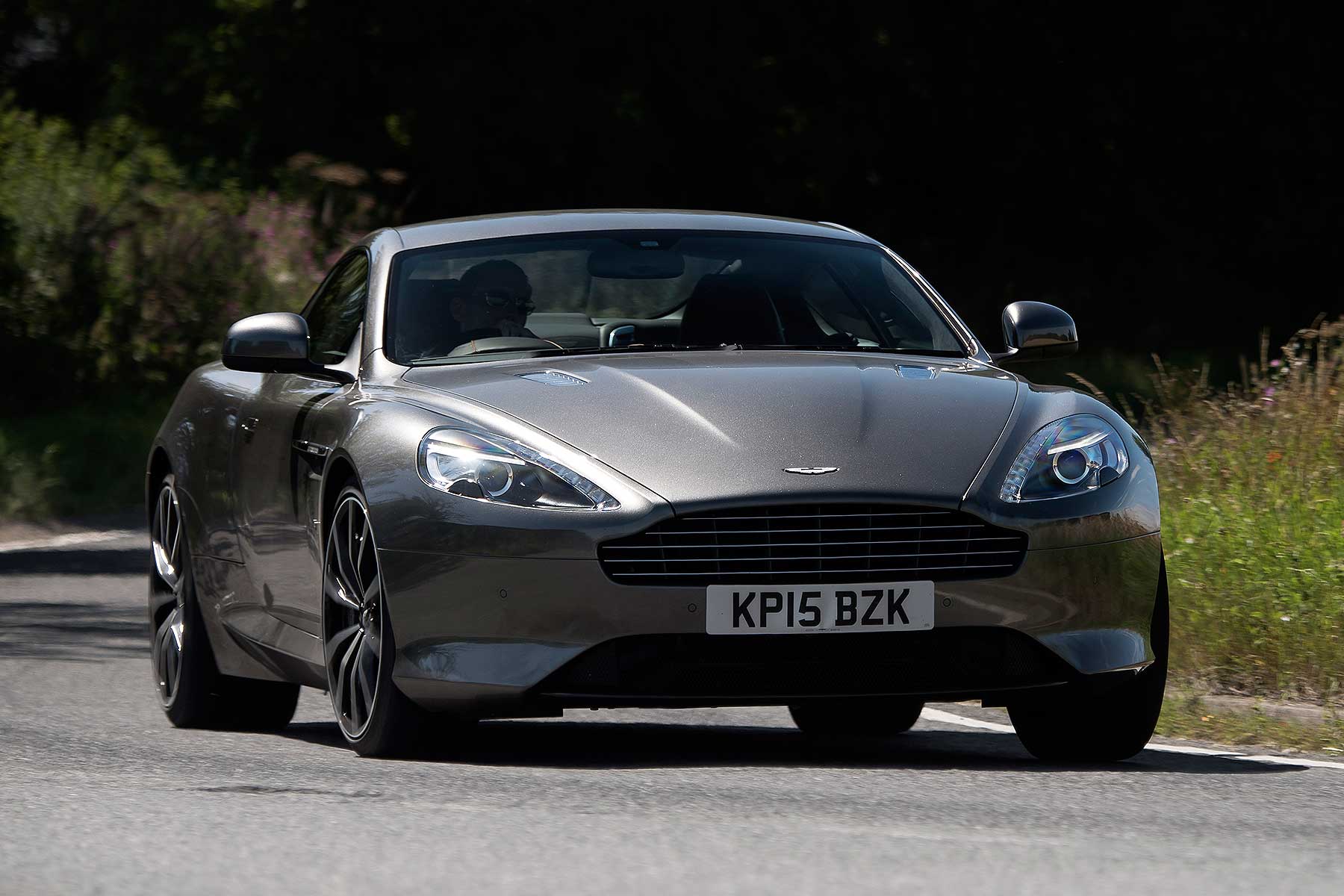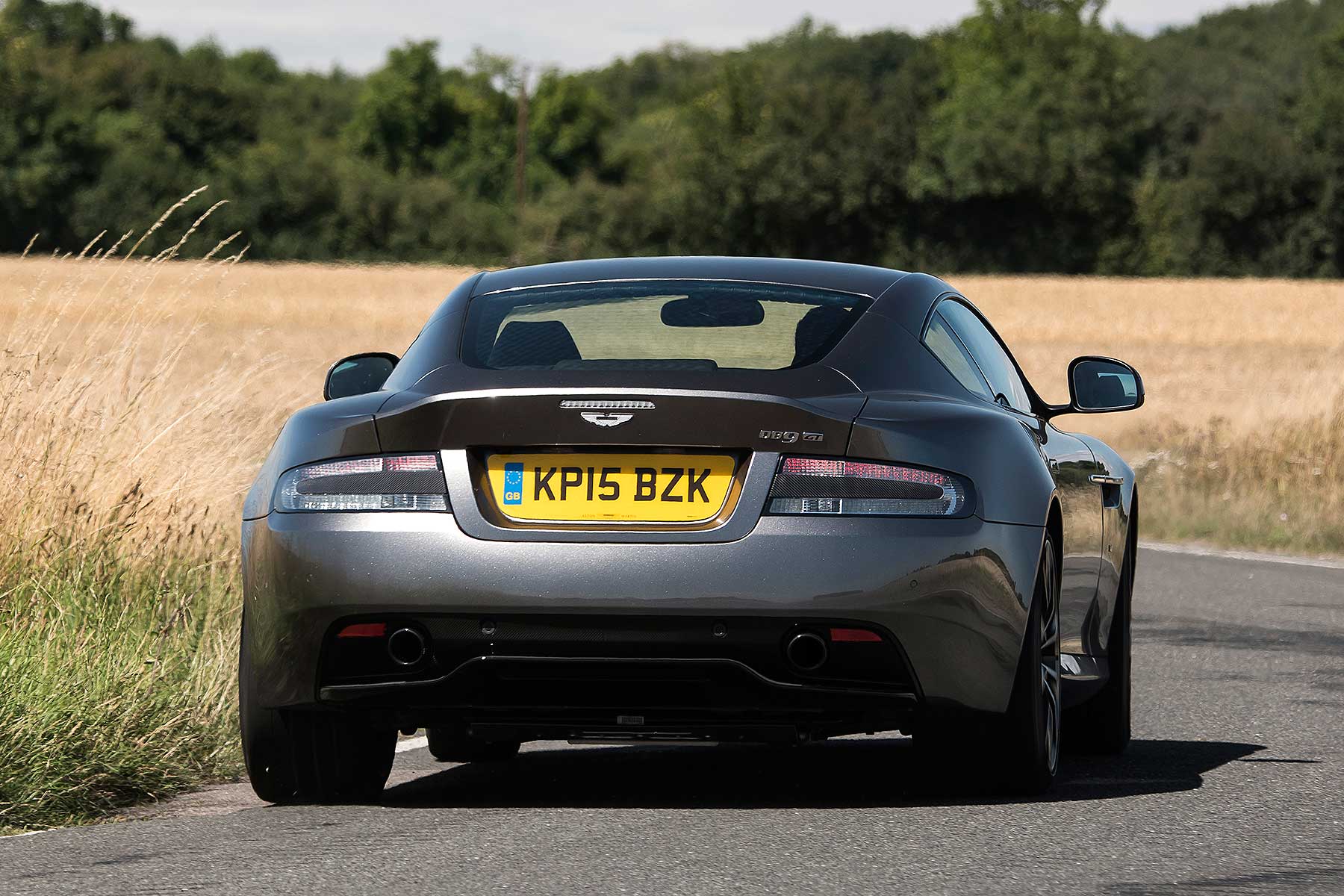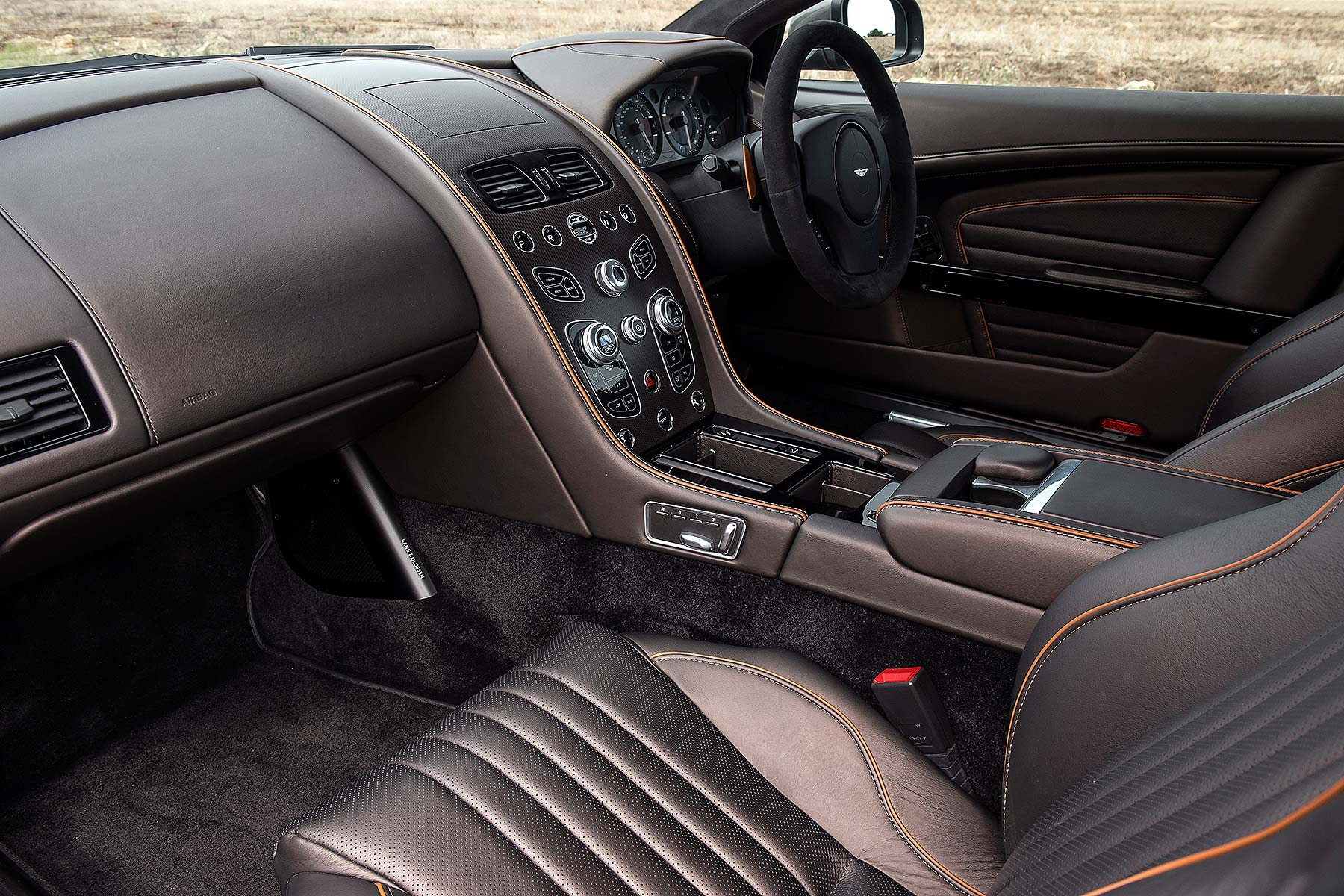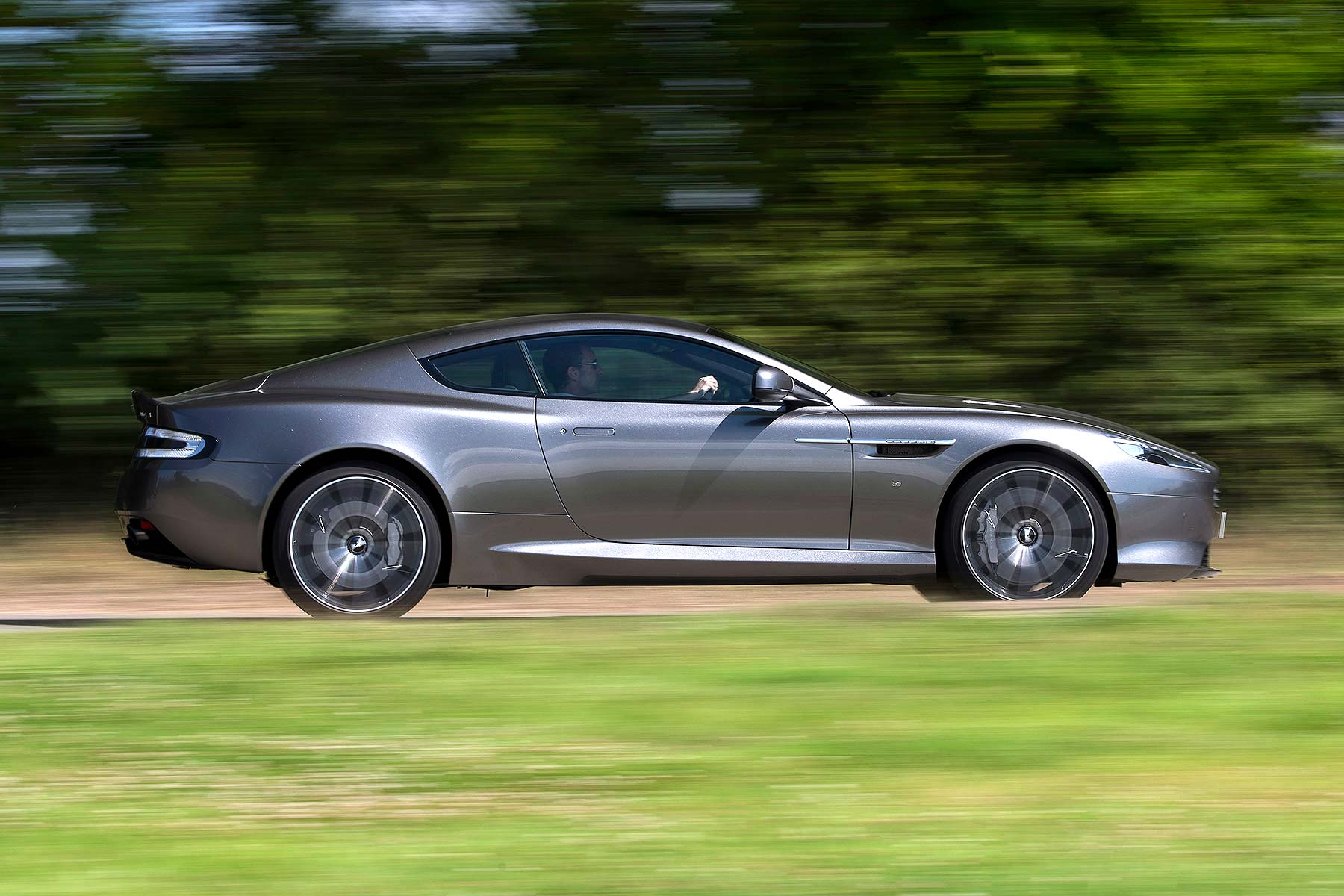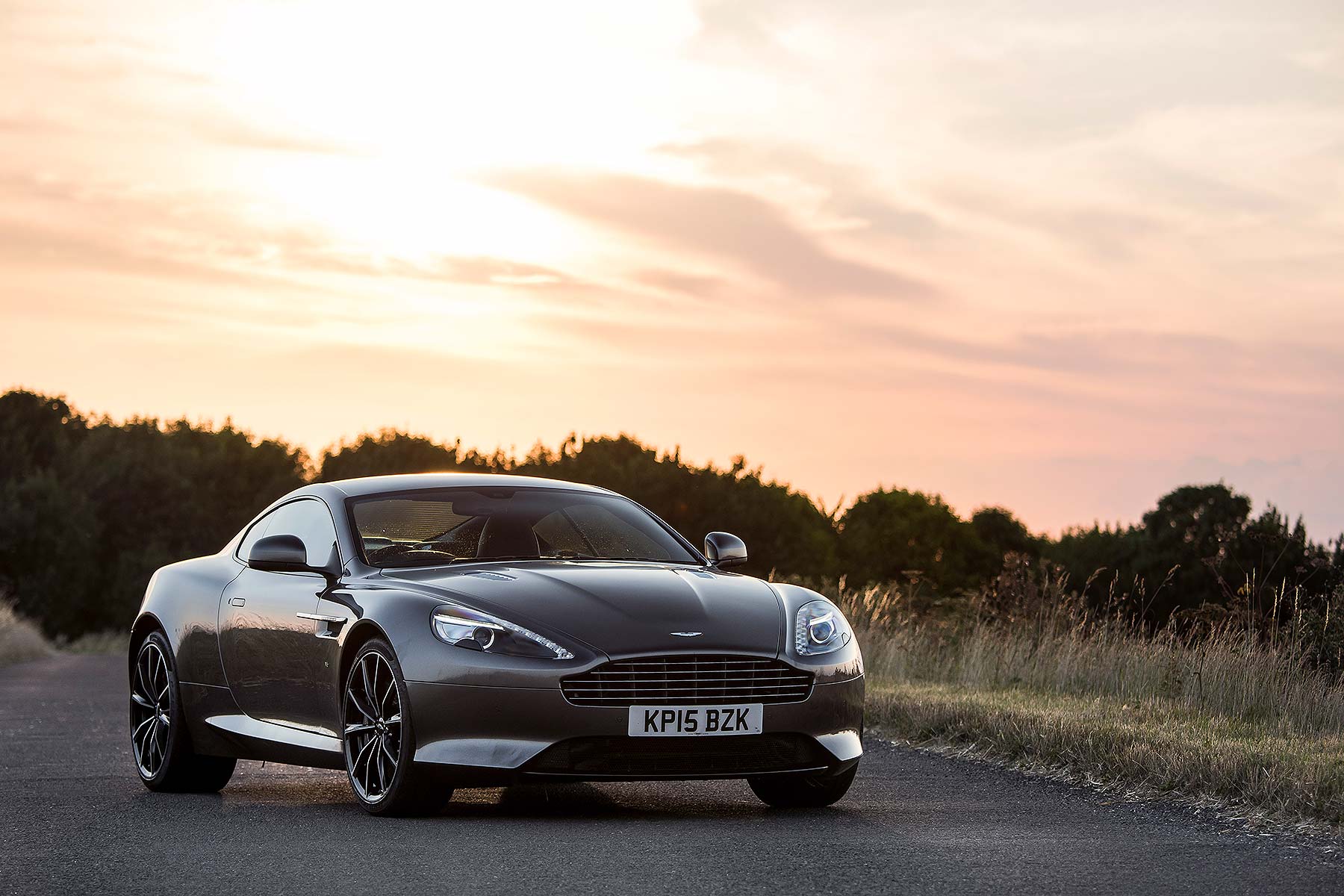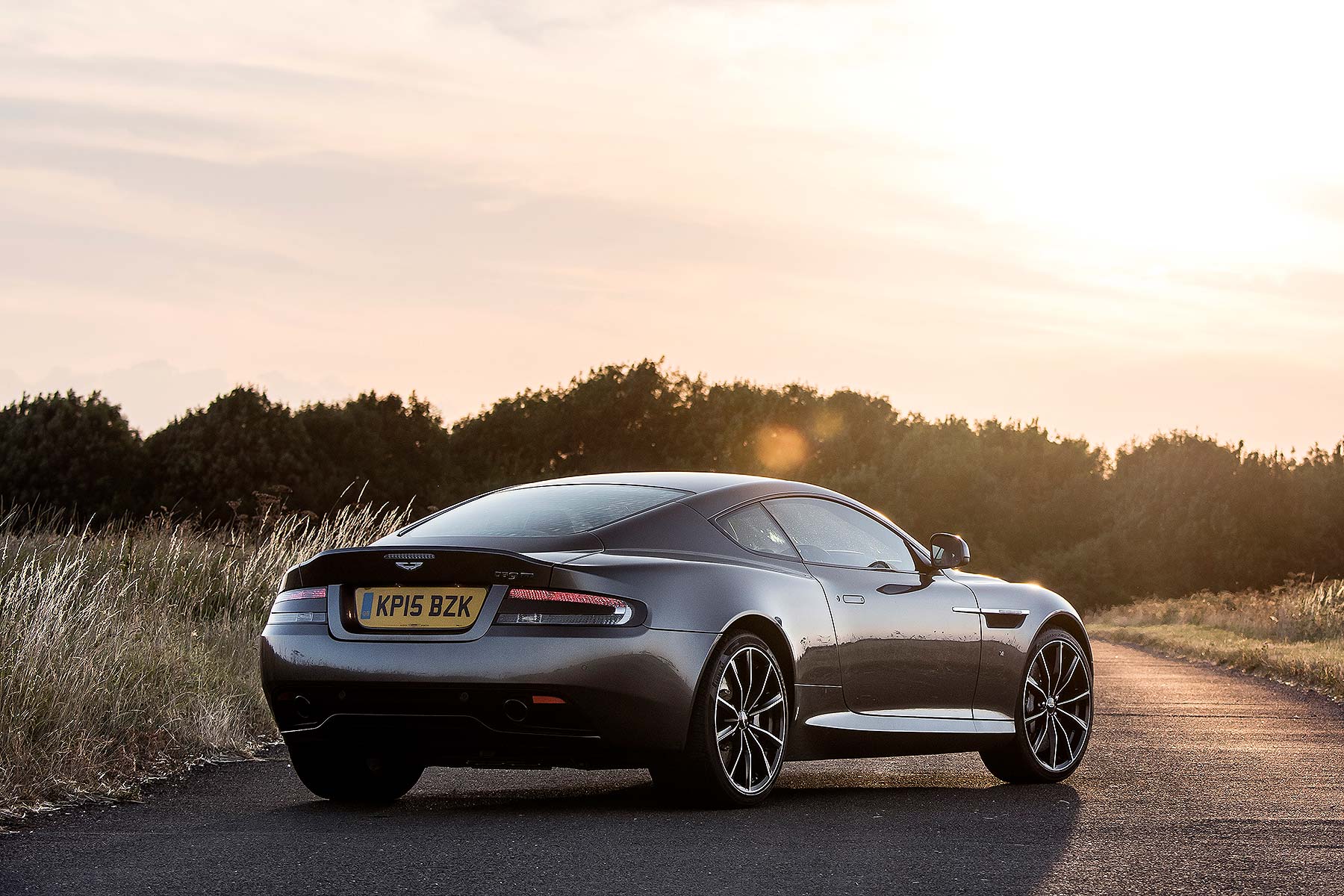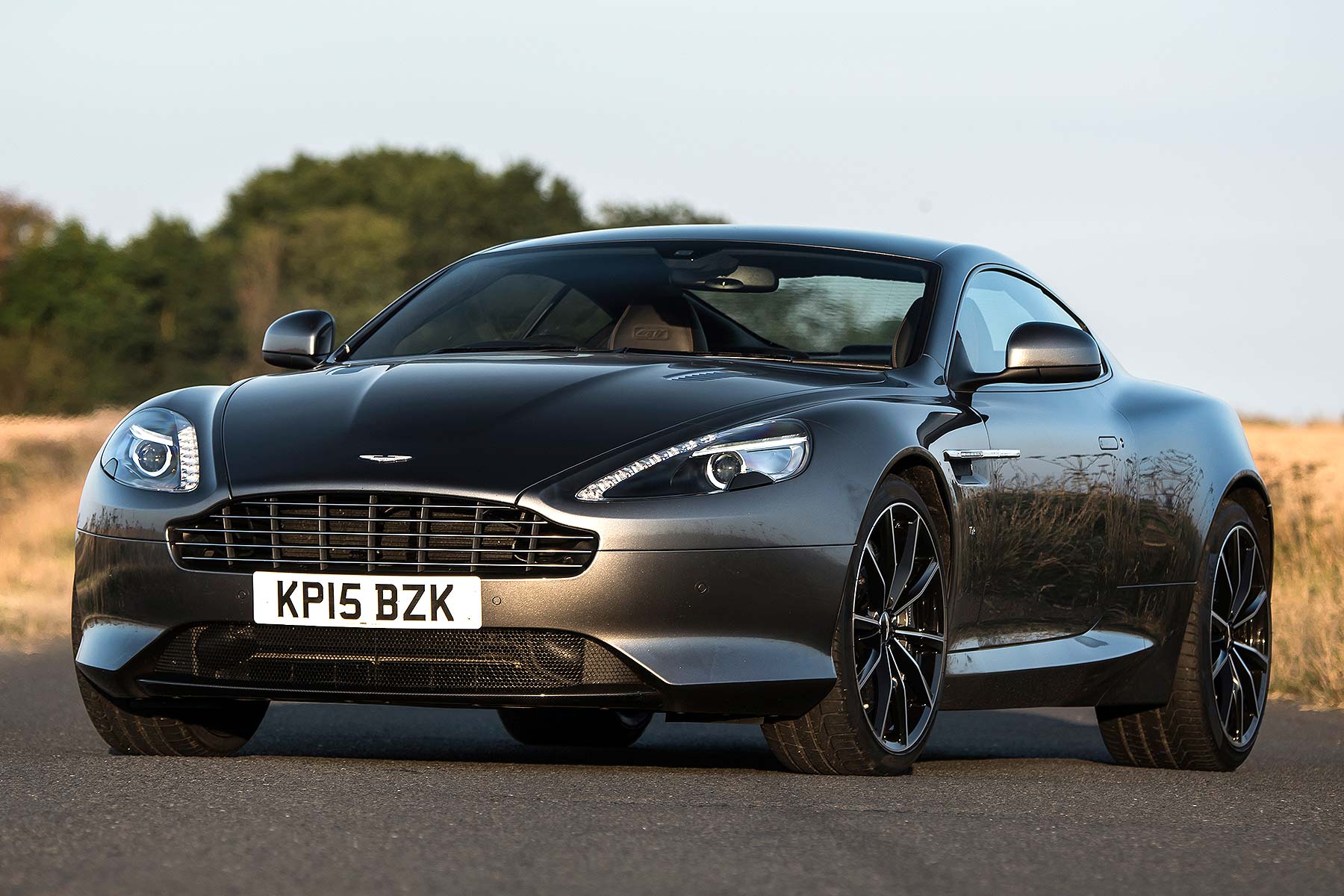 Meet the final hurrah for the longest-running modern-era Aston Martin still on sale. Aston Martin is about to enter a new modern era, you see, and this car’s replacement – 2016’s DB11 – will see the firm embark on an ambitious future with multiple new models, all-new architectures (and more than a little Mercedes-AMG tech for good measure).
Meet the final hurrah for the longest-running modern-era Aston Martin still on sale. Aston Martin is about to enter a new modern era, you see, and this car’s replacement – 2016’s DB11 – will see the firm embark on an ambitious future with multiple new models, all-new architectures (and more than a little Mercedes-AMG tech for good measure).
The company has a lot to thank the DB9 for, though. It signalled the arrival of the ultra-pro Aston Martin fit for Bond and proved to be an ever-desirable lynchpin around which the firm regularly sold more cars than ever before. Thousands of new ones have been delivered each year since its launch back in 2003 and, like Reggie Perrin’s boss CJ, Aston didn’t get where it is today without the DB9.
How fitting for this new Aston Martin DB9 GT to be the most powerful iteration of the car yet, then: 547hp from the 5.9-litre V12 (that’s a 30hp boost), produced at a howling 6,500rpm, albeit no boost to a more meek 457lb ft of torque that you have to wait until 5,500rpm to experience. It’s a tiny bit faster, with 0-62mph in 4.5 seconds (just 0.1s faster than standard) and a 183mph top speed, although speed isn’t why this engine has been uprated. Simply, it’s the last, so it has to be the best.
It doesn’t look that much different either, to be honest. Aston Martin’s got plenty of other things to be doing than be spending time unnecessarily adding fripperies to a still-beguiling design. So we’ve just got black-painted front splitter and rear diffuser, tweaked lights front and rear plus a beautiful set of 10-spoke 20-inch alloys. Black anodised brake calipers and a GT-branded metal fuel filler round exterior tweaks out (unless you choose the special Scintilla Silver AML paint, mind: until this, that’s not been offered on the DB9).
Inside, there’s special fluted leather with a GT-branded head restraint, fancy Iridium trim pack and the option of Copper Cuprium leather. Think metallic copper-painted leather (or, don’t: this frankly sounds far worse than it actually is).
All routine stuff then, with no changes to the suspension or setup that would alter how the DB9 GT drives: again, they probably haven’t got time for that. Or could it be that this definitive DB9 has already been honed to perfection and doesn’t need any further tweaking – is it the best DB9 ever built? We put the £140,000 car to the test.
2015 Aston Martin DB9 GT: on the road
Driving the DB9 GT is like meeting an old best friend you haven’t seen for a while: you quickly rediscover why you got on so well and all the satisfaction quickly comes flooding back. The DB9 has always been a good GT car and, in 2012, became a truly great one. The DB9 GT fittingly rounds things off beautifully.
It’s a sensation overload. Everything is so wonderfully organic. The firm seats, engine woofle, utterly slack-free, gloop-free, EPAS-free steering, precision syringe-like accelerator pedal travel, even the intricately measured brakes that give you the sensation of clasping the carbon ceramics with calipers by fingertips; everything is old school in a good way – the stuff that a real GT car should do, done sublimely.
It doesn’t drive any differently to the spot-on, then-five-star 2012 DB9 that so revived the model when the short-lived Aston Martin Virage died (and donated its front end to the DB9). Marvel at how a 4.7 metre-long, 1,860kg car conceals the weight of its big V12 up front so well with intricately-measured responses and agility; smile at the natural squirm and variations in weighting sent to your fingertips through the steering (most of which is filtered out by modern electronic systems).
It’s a big, wide car but isn’t daunting because you don’t have to question or doubt anything it does. The rear transaxle gives it a sense of satisfyingly rear-biased weight distribution (it’s 51% at the back but it feels more than that), and a limited-slip differential helps you dial it up in confidence, particularly if you sport-mode the DSC and turn on the firmer adaptive damping setting.
The engine has more power too, although most of the time you’re unaware of it as it doesn’t have any more torque. So it still feels slower and less responsive than you’d expect a big V12 to – dare we call it flat at real-world revs before the six-speed auto or yourself downshifts three or four (yes, that many) gears? Peak torque is 5,500rpm around the reverse-sweep tacho, and feels it.
But work it harder than you’d ever imagine you’d have to, and it’s fittingly fast. Not like the missile more modern rivals are – machines such as the Ferrari F12 have redefined what’s fast these days – but pleasingly potent and enough to ensure you’re not embarrassed on the odd AMOC track day or continental cruise. Most won’t care how fast you are, they’ll be listening to you instead. Can you make sure your new-era cars sound this good, Aston?
2015 Aston Martin DB9 GT: on the inside
The cabin is of course very familiar. We’ve been living with this look for 12 years now, and it’s featured in every single Aston Martin launched since the DB9 rolled out. Spidery dials, arching centre console with its rotating pop-up screen, 1970s Jaguar XJ-S-style fly-off handbrake to the right, Ford PAG-era minor switchgear: you barely need to reacquaint yourself, so well will Aston fans know it all.
What’s striking about the DB9 GT is the truly wonderful fluted leather seats and, in the test car, the awful-sounding but, to these eyes at least, actually rather intriguing bronze metallic contemporary leather, offset by the DB9 GT’s iridium trim pack. It certainly looks striking and, if noting else, will provide a talking point at AMOC festivals in 30 years’ time. The Alcantara steering wheel probably won’t fare so well, though: leather would be preferable in a special like this.
The interior retains its more airy, light and open-plan feel compared to the Aston Martin Vantage – that raked-back GT-style rear window lets in a lot of light – and even the fact you seem to sit a bit high, giving a slightly lofty-feeling view out, feels fitting in this car.
Needless to say, it’s beautifully assembled and feels brilliantly hand-crafted (they don’t quite get the recognition they ought, but they do the bespoke-build thing very well indeed at Gaydon). Of course, you can ring the ways it’s showing its age – some wind rustle around the windows at speed, no driver information screen in the dials and so on – but all that’s to be expected in a runout special. In terms of this architecture, this is as good as it gets, and it duly feels lovely.
And even though the infotainment system is hardly cutting edge, and still bygone-era in its smallish display, tortuous controls and lack of touchscreen, Aston has still added a bit of tinsel for the DB9 GT. Now dubbed AMi II, it gets SMS smartphone integration, neat vehicle status displays (the power and torque meters are cool) plus the chance to tailor background themes that, again, will provide some Sinclair ZX81-style amusement at AMOC meetings in decades to come.
2015 Aston Martin DB9 GT: running costs
An area in which the Aston Martin DB9 GT truly is old school is in its thirst for fuel. None of this engine stop-start, consumption cycle-massaging fuel-saving nonsense for the big V12: it officially drinks a gallon of (super) unleaded ever 19.8 miles and if you don’t like it you can lump it.
CO2 emissions are correspondingly high at 333g/km, easily placing it in the most punitive tax bands, which will be relevant only to those whom these things matter – it won’t to most customers, which is why economy hasn’t been a particular focus to date.
At least, from our experience, that economy figure should at least be a bit more attainable than some more modern rivals which claim mid- to high-20s: we drove the big V12 across Europe earlier this year and saw 20-plus on the trip computer without even trying to modulate our speed. One to bear in mind in the face of undoubted future worries about fuel consumption.
Other running costs are not going to be any different from any other Aston Martin. Premium-level, then. Things like 20-inch tyres aren’t cheap. At least you shouldn’t have to buy new brakes all that often, as carbon ceramic stoppers are standard, and you can almost put your life savings on the fact that, after an initial dip, this end-of-era DB9 GT will eventually be worth more than you paid for it. Have you seen car auction prices recently..?
2015 Aston Martin DB9 GT: verdict
It pleasingly didn’t, but Aston Martin could rightly have called this DB9 GT the ‘Ultimate’ and not been disingenuous in doing so. As the firm prepares for a new era of technical alliance with Daimler, and the launch of the DB11 in 2016, so the DB9 GT showcases why the current modern era of the firm has been such a success.
Hopefully, future models will be this organic, this sensations-packed and detailed, this appealingly hand-crafted. It drives in an old-school way that, in the main, is good, and hopefully Aston will be able to keep all this too. In so many dynamic ways, it still feels contemporary and pleasing.
For all its lovely noise, the engine needs more torque, and much more flexibility. Rivals have low-down turbo assistance, and the lack of it dates the DB9. As does the interior, the infotainment system, the minor controls and, of course, the oh-so familiar looks.
But we know all that. The DB9 GT isn’t about being new, it’s about sending off this fine Aston Martin in style, and it does that perfectly. This is a great car, one of the most significant of all in the firm’s glittering history, and the DB9 GT sends it off in fitting style.
2015 Aston Martin DB9 GT: specifications
Engine: 6.0-litre V12
Price: £140,000
Power: 547hp
Torque: 457lb ft
0-62mph: 4.5secs
Top speed: 183mph
Fuel economy: 19.8mpg
CO2 emissions: 333g/km
ALSO READ
BMW X1 review: 2015 first drive
Nissan Juke-R 2.0 review: 2015 first drive
Caterham 21: has the sports car flop now come of age?
